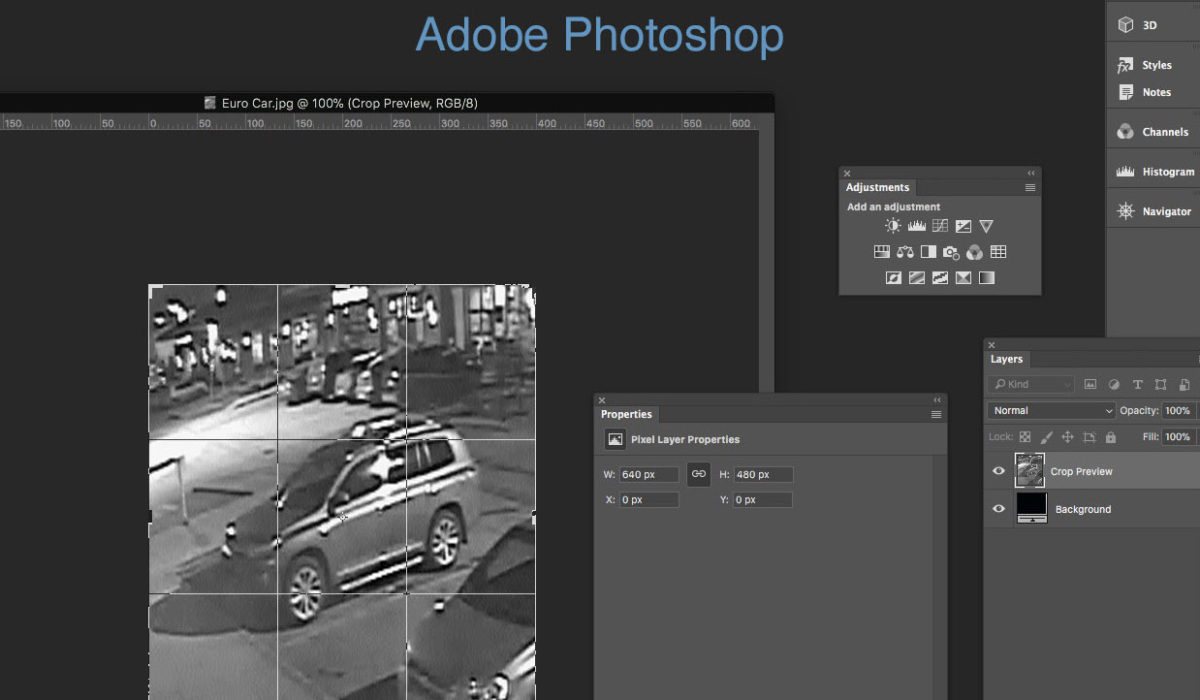Related to concerns with authentication, one of the most pervasive suspicions regarding digital image evidence is that the images have been surreptitiously edited in such a manner as to present a false picture of what really happened. Such editing may include deletion or insertion of images, changing the order in which images appear, or altering the audio content of digital video. The fact that such editing is shown to occur on television and in the movies has led the general public and the legal community to regard such evidence with some skepticism.
Editing digital image evidence for investigative and court purposes is quite legitimate if done correctly and if the editing is properly documented. For example, if a bank robbery takes up five minutes of a 24 hour video recording, it is appropriate to edit out the robbery itself and perhaps one minute on either end, resulting in a seven minute segment of video evidence. The investigator would also want to scan enough of the video recording to see if the robber is seen casing the bank beforehand. Further, the opposing party should be granted access to the entire recording to determine if any other relevant images are present. The balance of the video recording is irrelevant and therefore inadmissible, justifying editing as a result.
I have led video evidence hundreds of times. I always have the video evidence edited so that we see only the images that are relevant to the case. This is not done just as a courtesy to the viewer – rather it is counsel’s obligation to only present relevant evidence to the court.
The use of time-lapse, switched, alarmed and multiplex surveillance recording equipment necessarily involves editing because continuous video from one camera is not recorded. This method of forced editing would rarely cause admissibility concerns unless what was recorded presented a false depiction of the actual event.
Editing digital images will not render the evidence inadmissible provided the tendering party leads adequate and competent testimonial evidence on what images were edited, the reasons for the editing and the reliability of the remaining images. The Supreme Court of Illinois recently ruled on the issue of editing in State of Illinois v. Taylor, 2011 IL 110067; 956 N.E.2d 431 (2011). In overruling the lower court ruling that the state was required to establish that no alterations, deletions or changes had been made when the original DVR recording was transferred to VHS, the Court stated at p. 442:
Such a requirement is overly restrictive. Given the particular circumstances of any case, alterations, deletions, or editing may be necessary. As has been stated, “[o]f course, some editing may be necessary to make the evidence admissible in the first place.” Jordan S. Gruber, Foundation for Contemporaneous Videotape Evidence, in 16 Am.Jur. Proof of Facts 3d 493, § 17, at 528 (1992). For example, unimportant, irrelevant, prejudicial, privileged and/or confidential material should be removed. See Jordan S. Gruber, Videotape Evidence, in 44 Am.Jur. Trials 171, § 17, at 221 (1992) (“Where irrelevant or prejudicial material is deleted, editing may make an otherwise inadmissible videotape admissible. Where technical difficulties or distortions are addressed, editing may make the videotape evidence more understandable and thus more useful to the trier of fact.”). See also Jordan S. Gruber, Foundation for Contemporaneous Videotape Evidence, in 16 Am.Jur. Proof of Facts 3d 493, § 26, at 538 (1992) (“If a videotape contains irrelevant, prejudicial, or incompetent segments, the opponent of the evidence should request that the trial judge order the videotape edited or played back so that the jury is exposed to only fully admissible material.”). In general, most editing will not render evidence inadmissible but rather will go to the weight of that evidence. Jordan S. Gruber, Foundation for Contemporaneous Videotape Evidence, in 16 Am.Jur. Proof of Facts 3d 493, § 17, at 527 (1992); Jordan S. Gruber, Videotape Evidence, in 44 Am.Jur. Trials 171, § 31, at 242 (1992). The more important criteria is that the edits cannot affect the reliability or trustworthiness of the recording. In other words, the edits cannot show that the recording was tampered with or fabricated.
Editing is generally addressed as an issue of weight, not admissibility. [i] However, edited digital images will likely be excluded where the editing causes a disruption in the chronology or continuity of the event, or otherwise causes confusion. Inadmissibility on this basis results from the fact that the tendered images do not accurately establish and depict the events in question. [ii] Further, where the probative value of the remaining images is outweighed by the prejudicial effect, the evidence can be excluded.
[i] Pease Co. v. Local Union 1787, 393 N.E.2d 504 (1978, Ohio Court of Appeal); Pritchard v. Downie, 326 F.2d 323 (1964, United States Court of Appeals, Eighth Circuit); R. v. Ramos (1997), 101 O.A.C. 211 (Ontario Court of Appeal)
[ii] See for example R. v. Penney, [2002] N.J. 70 (Newfoundland Court of Appeal)
